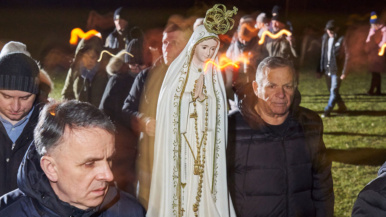Chronicling the cultural and economic history of Yonge Street and its enduring importance
The One intends to honour this foundational street in the design of its building and surrounding area

With its arrow-like purpose, laid out as a great linear axis running north from the edge of Lake Ontario, Yonge Street has been a measure of Toronto’s progress and vitality since its inception, attracting businesses and cultural initiatives that have shaped the city’s identity.
An ambitious project for prosperity
As historians have analyzed, Yonge Street began as an ambition of John Graves Simcoe, Lieutenant-Governor of Upper Canada, who arrived on the irregular fringe of the lake in 1793 as a veteran of the American War of Independence. Accompanied by his wife, Elizabeth, they made the best of their posting, erecting a “canvas house” as their first dwelling. Making use of native trails, he ordered soldiers of the Queen’s Rangers to create a portage route that linked Lake Ontario to Lake Simcoe—which was named after his father. From there, merchants, fur traders and adventurers could travel via the Severn River system to the coveted harbour of Penetanguishene on Georgian Bay. The new route would assure access to the Great Lakes without going through Detroit, a strategic post precariously held by the British at the time from the Americans who were pushing north.

The first section opened in 1796 and was named after Sir George Yonge, the British secretary of war. By 1799, Yonge Street stretched from the edge of Lake Ontario to Holland Landing, a rudimentary road that was roughly 20 meters wide, described, in parts, as “a sorry bog.”
Simcoe could not have known what the future would hold, that Yonge Street would become the spine of a thriving city, lined with commercial ambitions, cultural initiatives and architectural expressions of its optimistic spirit.

A first for a street of firsts
“With care and imagination, the initial sameness of the most prosaic of grids may become the matrix within which interest, diversity and human richness can be provided for,” wrote architectural historian Spiro Kostof in his 1993 book, The City Shaped: Urban Patterns and Meanings Through History.
Yonge Street immediately attracted innovators. The first Eaton’s store in Canada opened on Yonge in 1869; Sam the Record Man’s iconic flagship store stood on the street for nearly 50 years. In 1925, the city’s first set of automated traffic signals were set up at the intersection of Yonge and Bloor. In 1937, Canadian Tire purchased a vacant supermarket building on Yonge just north of Bloor, where store clerks wore roller skates in a promise for speedy service. Furthermore, Canada’s first subway opened along Yonge, running 4.6 miles from Union to Eglinton in 1954.

Mizrahi Developments felt a great sense of responsibility in working closely with Foster + Partners, one of the world’s most innovative architectural firms, to create an iconic tower, The One, rising at the southwest corner of Yonge and Bloor. It will be a first like so many others on Yonge Street–Canada’s only hybrid exoskeleton super structure and the tallest building in the country.
Honouring the history of Yonge Street
As part of the planning for The One, Mizrahi Developments worked with Lord Cultural Resources, a global firm specializing in commemorating cultural capital. The historic storefront of the William Luke Building, which is located south of Bloor Street on the west side, is being restored by Mizrahi and incorporated into the design of the tower. Constructed in 1884, it is representative of the craftsmanship of Toronto’s late 19th century commercial buildings. In the windows of this historic storefront will be an image printed onto the glass of the east side of Yonge Street circa 1929, providing pedestrians a view of how the street once looked.
Memorial plaques celebrating some of the important historic venues on the site of The One will be placed at the base of the tower, including Stollery’s, one of Canada’s oldest independent clothing retailers; His Majesty’s Theatre, the first movie theatre to be established in the Yonge-Bloor area, and the place where Boris Volkoff, a Russian-born choreographer and dancer ran a dance school and where famed teacher, actor and director, Dora Mavor Moore, once taught and performed.
Embedded into the sidewalk plaza surrounding The One will be tiles, etched with images of shoes representing the types of people who once trod upon the same area—indigenous moccasins, boot spats, ballet shoes, Oxford spectator shoes, militia boots, ankle strap shoes and construction boots.Reminders of the native landscape will also feature in sidewalk tiles, including images of Canadian Yew Pines, Valley Forge Elms, Princeton Elms, Black Ashes, Sugar Maples and Bunchberry, Sages.
“The location is integral to the identity, heritage and evolution of our great city,” says Sam Mizrahi, president and founder of Mizrahi Developments. “The One stands for the confidence, beauty and vitality of Toronto.”






